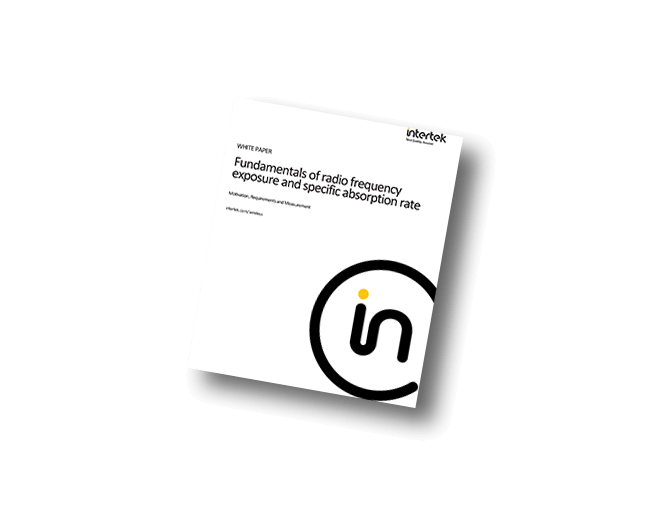Intertek provides Specific Absorption Rate (SAR) Testing on portable and mobile telecommunications equipment
What is Specific Absorption Rate (SAR) testing and how can Intertek help?
Excessive exposure to radio frequency (RF) energy can damage human tissue. To prevent this, many countries around the world have introduced standards that limit the amount of RF exposure allowed from transmitters of all types. Intertek can help determine if your product meets those requirements. We perform the required testing for a variety of portable and mobile telecommunications equipment with state-of-the-art equipment, using cutting edge technology, providing you with accurate and dependable RF exposure measurements. Intertek is one of the few organizations capable of testing and certifying your product to RF exposure standards, as well as electrical safety standards and FCC requirements.
RF exposure is evaluated using a “phantom” that simulates the electrical characteristics of the human head or body. The RF energy penetrating the “phantom” is monitored by precisely positioned probes that measure Specific Absorption Rate in watts per kilogram of tissue.
In the United States, the FCC regulates SAR under 47 CFR Part 2, section 2.1093. Products intended for general use must meet a SAR limit of 1.6 mW/g averaged over one gram of tissue in any part of the head or body, and 4 mW/g averaged over 10 grams for hands, wrists, feet and ankles.
In the European Union, RF exposure limits have been established by Council Recommendation 1999/519/EC. Harmonized standards cover the most common products such as cell phones and RFID devices. The limits and methods of RF exposure evaluation in the EU are similar but not identical to those in the US.
Radio-frequency (RF) exposure is a critical safety consideration for any portable electronic device worn on or near the human body. Download our SAR White Paper today to stay ahead of the curve on RF safety compliance.
Maximum Permissible Exposure (MPE)
When users are typically positioned further away form the radio transmitter, typically more than 20cm, the method of RF exposure evaluation is termed Maximum Permissible Exposure (MPE). In many cases MPE may be calculated from transmitter output power and antenna type. In some cases, MPE must be measured directly in terms of electric or magnetic field strength or power density, depending on the operating frequency of the transmitter.
In the United States, the FCC rules for MPE limits are found in 47 CFR Part 2, section 1.1310. Mobile devices, which are more than 20 cm from the user and are not in a fixed location, such as tabletop wireless nodes, are also governed by section 2.1091 of the FCC rules.
In the European Union, Council Recommendation 1999/519/EC contains the exposure limits for fixed and mobile transmitters. The harmonized standard EN50385 applies limits to base stations operating in the frequency range 110MHz to 40 GHz.

Knowledge Center
- Cybersecurity Awareness Training Fact Sheet
- Common Criteria Certification Process Fact Sheet
- FIPS 140-3 Process and Service Offerings Fact Sheet
- Cyber Security Risk in a Mass Remote Working Environment Webinar
- Intertek Cyber Assured Fact Sheet
- Consumer Product Focused Cyber Security Test and Certification Program
- PCI PIN Transaction Security (PTS) Cyber Security Fact Sheet
- Cyber Security Assurance Overview
- ANSI/UL 2900 Cyber Security Assessments Fact Sheet

Upcoming Events

